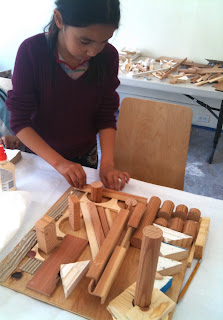
Dreamtime paintings are sacred to Australian Aborigines. They tell a story and communicate to other aboriginal tribe members about the location of animals, watering holes, food and geographical details of their land. Only recently have contemporary art enthusiasts supported the marketing and proliferation of these dream paintings into the resale commercial realm.
These paintings reveal the sacred creation story believed by aborigine people of how the spirits formed all the mountains, rivers and valleys. "Found" in a trans-like state the paintings are done on the ground revealing a bird's eye view of the land and used as maps among other tribe members. Covered in dots, the surfaces resemble a celestial image of patterns and symbols arranged like constellations that reveal camp sites, fires, grass, kangaroos and endless detailed information in the night sky.
FMAA students studied many of the symbols and styles used by aboriginal artists to create a dreamtime painting of their own. First priming the canvas with a mid tone color to resemble the earth, students then drew their design with oil pastel and completed the painting in acrylic. The stories below tell of campsites and campfires with kangaroos and watering holes under the midnight stars. See if you can find them all!


















































